Go figure
Monday, 2 November 2015
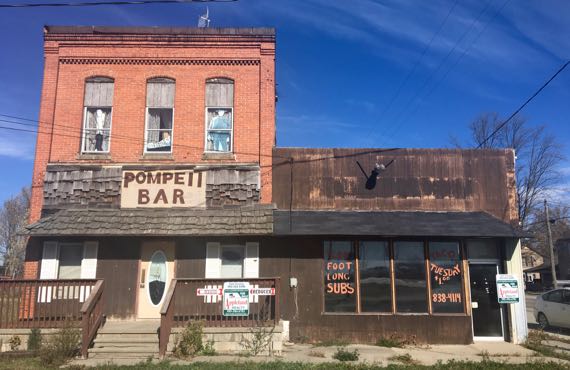
Little did I know when I was standing there, but the local pronunciation is…Pom-pee-aye.
Monday, 2 November 2015

Little did I know when I was standing there, but the local pronunciation is…Pom-pee-aye.
Wednesday, 16 September 2015

Just a software upgrade…and yet the agree/disagree text reads like a typical oblique 21st-century fortune-cookie-fortune.
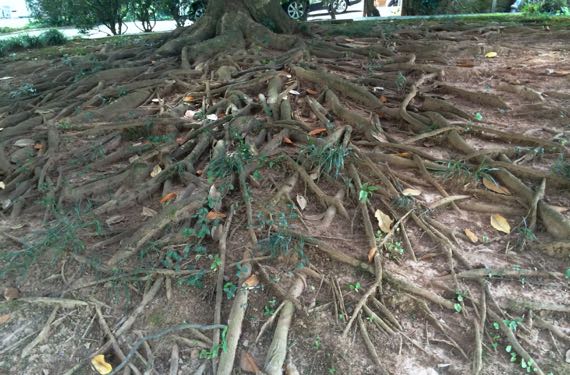
My bit of wisdom today, or my attempt at that: this world is as entwined and interlaced as these magnolia roots.
Thursday, 18 June 2015
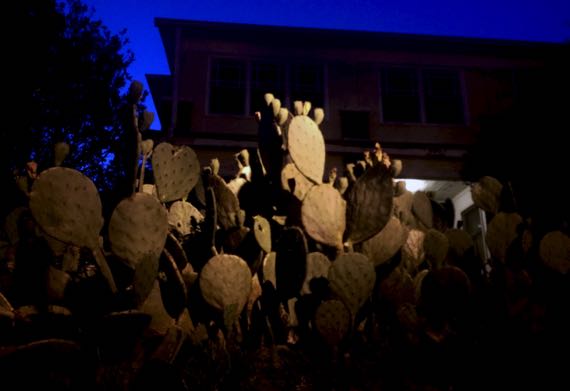
Love the light on the fruit at the top particularly. Fruit’s still green, but when they get ripe…yum!
These nopal fruits are called tuna/tunas in southern Mexico. Tuna, the fish, is called atún. Yes.
And sopa is soup and jabón is soap. And sapo is toad. Just sayin’.
Wednesday, 20 May 2015
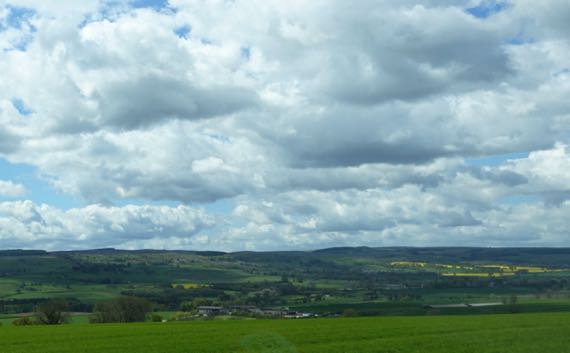
We saw the landscape change today, first as we drove north, eventually through the Pennines, and then as we drove east, descending the Tyne drainage. We saw more critters than people throughout most of it, I daresay.

We watched the row crops yield to pasture, with fields defined almost exclusively by stone walls.
We did this in Our New Car!! Yes, new to us, but ALSO it had 40-some miles on it when The Guru received the keys! New car smell! Shiny white!

The rolling countryside became treeless….
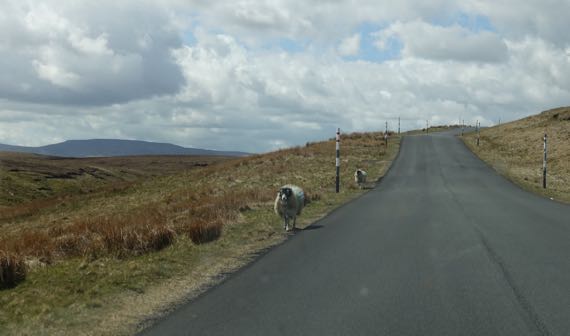
And we were on the open range, driving between the snow-sticks, and watching for “LAMBSONROAD.”

Even more exhilarating, we visited a Roman fort…. That’s the land of the barbarians on the left, and down at the bottom of the hill…the creek…that’s Knag Burn. Burns are creeks. Other things, too…. Many of the trees in this area were pine plantations, and some were newly logged, but not these “forests.”
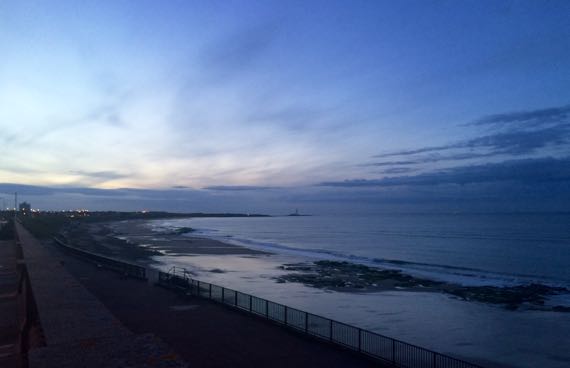
Our east leg took us to the end of the wall/road, and we watched the afterglow on a North Sea seawall.
Technical report: we’ve been using Goog__Maps to do our navigation, with Miss Voice turned on. She mentions nearly every roundabout, even the ones that are just a big white dot in the middle of a circle of pavement. Keeping us on our toes. Every once in a while she skips one, but our route is obvious. Sometimes she over-narrates curves and turns. Today she totally skipped one, and we had to backtrack. I think it was a new subdivision that wasn’t there in her world, although it was on the map. Still, using technology makes the whole process quite smooth compared to scrutinizing printed maps…without the magic blue dot of self-ness (as in, I am here, right HERE, therefore I exist…).
Friday, 15 May 2015
Here are your choices: “Soft verges,””Weak bridges,” or “No fly tipping.”
“Soft verges,” as you might guess, refers to the condition of the margin along the blacktop (ahem, macadam) of a road, when that margin is unpaved and ungraveled, and, when it’s been raining recently, like now, muddy, or liable to be muddy, even if it’s grass-covered. So, beware soft verges!
“Weak bridges” is info for drivers. It’s left up to you what to do with that knowledge. As near as we can tell, weak bridges may be…unsafe under heavy vehicles. Note the difference between this notification strategy and one where the sign says, for example, “no vehicles over 30,000 lbs,” or similar. The positon taken by the highway department is quite different….
I’ll let you continue to ponder the last one: “No fly tipping.”
Or perhaps you are more worldly than I, and KNOW what it means….
On to some stories for now….
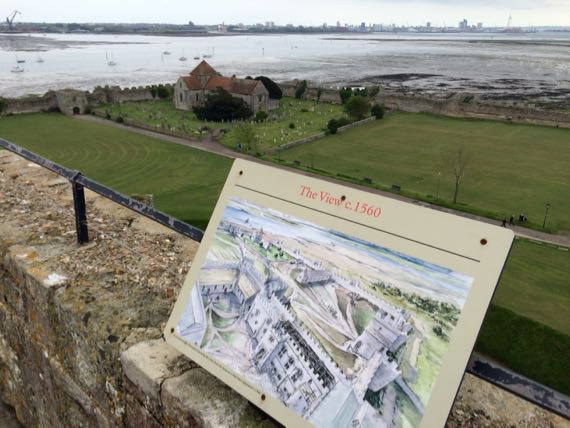
This is a view from the substantially complete keep tower from a 12th-century castle…built inside the walls of a ca. late AD 200s Roman fort. Yes, these are the best-condition walls for a Roman fort standing today. In an odd twist of fate, the fort walls were finished, but the interior occupation was short-lived and not robust. The Romans built this, along with many other fortifications on both sides of the English Channel, to control piracy and brigandage during a period of unrest.
Centuries after the Romans left, and after some occupation by the intervening generations, the keep-tower I’m standing on to take this photo was built to replace the most protected corner of this large compound, along with ancillary rooms and structures. The castle occupies only one corner of the Roman fort. The church opposite also dates to the 12th-C, although we saw a grave with a death-date of about a century ago; it’s still in use. The keep area was modified several times through the Medieval period….
The roof of the keep (modern roof on 14th-C uppermost floor) has a small walkway all the way around, with access via a tight circular stair with worn narrow, pie-shaped stone steps (and a modern rope for a railing). I liked this view, beyond the walls and across revealed tidal flats, at modern boatyards.
On the list of who slept in this castle: King John of Magna Carta fame, who used it as a jumping-off place for his activities in Normandy….
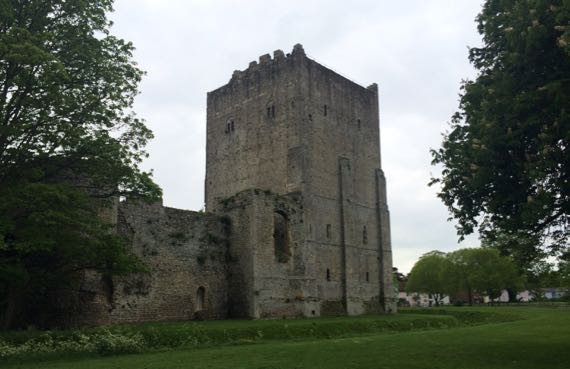
Here’s the keep, anchoring the corner of the Roman fort-wall farthest from the harbor. There’s a moat around the fort, and another moat inside the Roman walls around the castle. THAT’s protection!
The keep was used as a prison in the 1800s, so despite excellent preservation of the Roman walls, the keep endured more alterations.
There’s plenty more known about the history of Portchester Castle, some of it on WikiPee. (I give you the name of this building here at the end, in keeping with the info-at-the-end pattern of the optional title explanations….)
Okay, that’s plenty of distraction. Back to the phrase “no fly tipping.” Here’s the only clue we had: such signs are near dumpsters, like in the back of a grocery store or fast-food restaurant parking lot.
So, is your choice “No fly tipping?”
Saturday, 13 September 2014
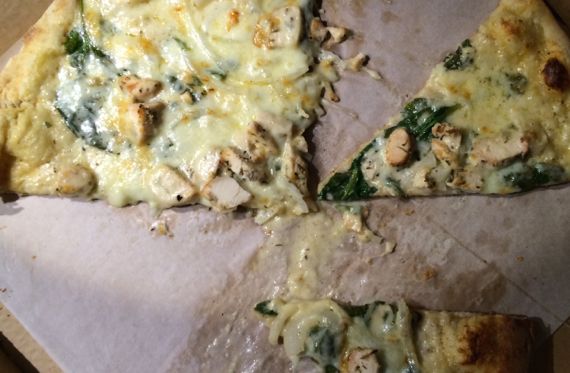
As we devastated this pie, I thought about the term Florentine appended to a dish usually means that it contains spinach and cream (in a sauce), or appears to—at least that’s the convention on this side of the Big Pond. Without a doubt the cooking style of Florence is far more complex and interesting, however….
Monday, 9 June 2014

Yeah, I was in a mood, so the text is “upside down.” I especially love the white-lined blue-dot period. This was not taken during a night or during midsummer. Hah!
I’m in climate change shock. In this case the climate change is because we drove about 1K miles south over the weekend. We’re in a wave of humidity and the high temp today was about 4°F above average. The two combined—humidity and temperature—constitute an atmosphere thick enough to be carved, I swear!
Wednesday, 14 May 2014
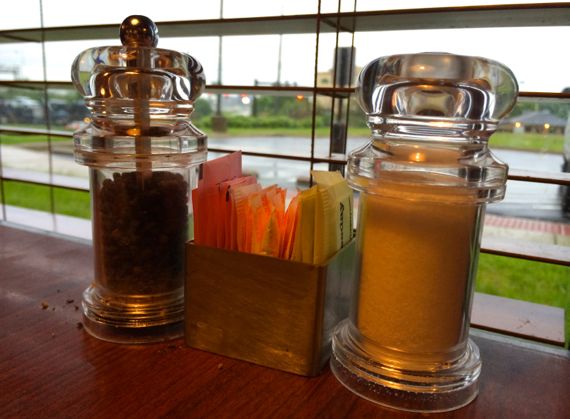
“Tire alligators,” the driver commented, noting the curled tread strips littering the highway.
Monday, 5 May 2014
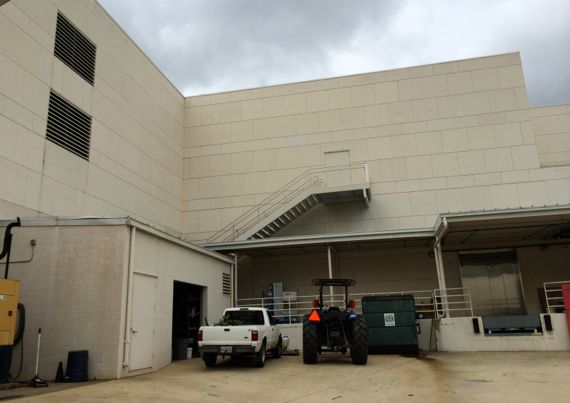
I’m so very glad I’m beyond (or maybe I’m deceiving myself) those story questions test-givers like. The “is-tos” were opaque to me—often totally opaque.
As in: the loading dock is to a major building as the…is to the….
See, I’m so bad at them, I can’t even make one up!
Thursday, 24 April 2014
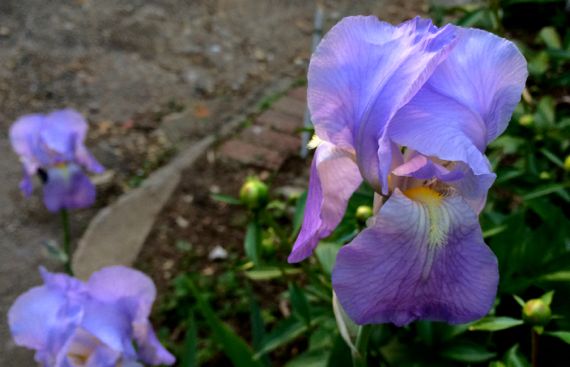
I should have taken a photo about 15 minutes earlier, when the late-sun was back-lighting the petals. Still, it’s a fine and lovely iris.